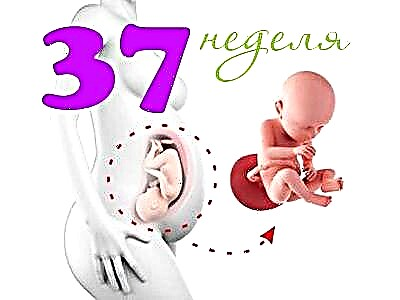Dislocation is the displacement of the articular surfaces of the bones outside their normal position. In children, dislocations can be congenital or result from trauma. Localization can also be different. In order to know how to act correctly for parents, in this article we will consider the most common dislocations in children, their manifestations, diagnosis and treatment tactics.
The most common are:
- subluxation in the cervical spine;
- dislocated arms;
- dislocation of the hip joint.
Possible complications resulting from damage to ligaments, blood vessels and nerves carry the greatest danger in case of dislocations. Dislocations do not always have vivid clinical manifestations, which is very dangerous with late manifestations of complications.
Dislocated hip in a newborn
Among congenital dislocations, the most common is hip dislocation in newborns, or hip dysplasia. The articulation of the femoral head with the acetabulum of the pelvic bones constitutes the hip joint. Like every joint, it has ligaments and a capsule.
Hip dislocation is still formed in utero during fetal formation. Underdevelopment of the joint structures occurs, as a result of which the head of the femur cannot be held inside the glenoid cavity.
The exact cause of dysplasia is not known, but there are risk factors:
- large fruit;
- breech presentation of the child;
- hereditary predisposition;
- aggravated course of pregnancy (lack of water, toxicosis, hormonal diseases, bad habits).
When examining a newborn, you can immediately notice signs of hip dislocation:
- shortening of one of the limbs;
- asymmetry of the gluteal folds;
- the inability to take the bent legs to the side;
- the occurrence of a click when abducting the bent legs.
Additional methods of examination to confirm the diagnosis include ultrasound of the hip joints and X-ray.
 Treatment begins when a diagnosis is made. A wide swaddling is applied, moving the legs to 60 degrees and bending at the knee and hip joints. This treatment continues for three months. Then, if the signs of dislocation have not disappeared, fixation devices are used.
Treatment begins when a diagnosis is made. A wide swaddling is applied, moving the legs to 60 degrees and bending at the knee and hip joints. This treatment continues for three months. Then, if the signs of dislocation have not disappeared, fixation devices are used.
There are several types of devices for conservative treatment of hip dislocation: Mirzoeva and Vilensky splints, Freik's pillow, Volkov splint, Pavlikov's stirrups. They are prescribed by pediatric orthopedic traumatologists individually in each case of the disease.
For children over a year old, it is possible to use adhesive tape traction. All this is combined with physiotherapy, strengthening massage and gymnastics. In the absence of the effect of conservative therapy, they resort to surgical treatment, after which the child undergoes comprehensive rehabilitation.
Dislocation of the cervical vertebra in a child
The cervical spine consists of 7 identical vertebrae. The structure of the first (atlas) and the second vertebra (axis) differ. The atlas is ring-shaped and connected by the lateral sections to the occipital bone. Axis has a process at its base that connects to the first vertebra.
They form a movable Cruvelier joint that allows the head to turn to the sides. All vertebrae are reinforced with ligaments and muscles, but in a developing child's body, the cervical spine is easily injured by negative external influences.
In newborns, dislocation of the cervical vertebra occurs as a result of birth trauma. The baby still has an immature tendon and ligamentous apparatus of the neck, and even with a slight injury or incorrect head position during childbirth, subluxation may occur. In older children, the main reason is trauma during a fall, diving into water, or a strong impact.
Allocate four types of cervical subluxation:
- Rotary... It occurs with sharp turns and tilts of the head. In this case, the first cervical vertebra is tucked. Most often, this dislocation occurs in newborns and young children.
- Active... Atlas subluxation occurs as a result of strong muscle tension during a sharp turn of the head. It is characteristic for children and adolescents with immaturity of the musculoskeletal system.
- Cruvellier symptom - subluxation between Atlantogm and Axis, which occurs with a malformation of the odontoid process of the second cervical vertebra. The disease is diagnosed mainly after injuries or overloads of the neck muscles.
- Kienbeck subluxation... The most dangerous and, fortunately, rare type of subluxation. It is accompanied by compression of the nerves and blood vessels, which leads to a very pronounced pain symptom.
Diagnosis of subluxation
When there is an obvious clinic for cervical subluxation, the diagnosis is not difficult.
 But there are nonspecific symptoms, which can also be caused by subluxation: frequent anxiety of the child, sleep disturbance, loss of appetite, regurgitation, for older children these are headaches, pain in the neck, dizziness.
But there are nonspecific symptoms, which can also be caused by subluxation: frequent anxiety of the child, sleep disturbance, loss of appetite, regurgitation, for older children these are headaches, pain in the neck, dizziness.
For diagnostics, radiography of the cervical spine in frontal and lateral projections, if necessary, in oblique projections, as well as computed tomography of the neck region, which accurately describe the damage, are used.
Based on complaints, examination and the results of additional research methods, the traumatologist will make the correct diagnosis and prescribe treatment.
Treatment of subluxation of the cervical vertebra in a child
If subluxation of the cervical vertebra occurs, it is necessary to ensure immobilization (that is, immobility) in the cervical spine and immediately deliver the victim to the children's trauma center.
DO NOT self-medicate and try to correct the subluxation yourself! So you can do even more harm by injuring the nerves and blood vessels.
An orthopedic traumatologist will be able to correct the subluxation in the absence of complications (bone injuries, ligament ruptures, etc.), after which rehabilitation measures are prescribed. From 1 to 3 months, the victim must constantly wear a Chance collar, limit physical activity.
Prescribed medications that improve the functioning of the nervous system, blood supply, muscle relaxants and pain relievers if necessary. Additionally, physiotherapy exercises, massage, physiotherapy are carried out.
To prevent dislocation of the vertebra of the cervical spine, it is necessary to evenly distribute the load, observe safety precautions during exercise, especially somersaults. If you experience pain in the head and neck, you should consult a specialist.
Dislocated arm in a child
Children are very mobile and sometimes difficult to keep track of. During active games, they are often injured and can get a dislocated arm.
By localization, the dislocation of the upper limb can be in the shoulder, elbow, forearm, or dislocation of the finger.
Also, one of the most common situations is the subluxation of the elbow joint in a child with a sharp jerk of the arm. Subluxation is a violation of the correct relationship between the articular surfaces of the vertebrae while maintaining contact between them.
When receiving a dislocation of the arm, the following symptoms:
- swelling of soft tissues, bruising;
- unnatural position of the limb;
- severe pain, aggravated by movement;
- limitation of mobility of the injured hand.
Whether or not a child has a dislocation can only be determined by a doctor. Clinically similar can occur for the usual stretching and fracture of the bones of the upper limb.
If you do not immediately pay attention to the injury, but see a doctor after a few weeks, conservative treatment will no longer help, and you will have to do an operation.
First aid
Before the arrival of an ambulance or before contacting the emergency room, parents can independently provide first aid. Only this must be done carefully so as not to cause additional harm.
- It is necessary to give the child pain relievers to relieve severe pain.
- The injured limb must be carefully immobilized - to ensure the immobility of the joint by applying a hard splint or bandaging the arm to the chest.
- Apply a cold compress to the injury site to relieve pain and reduce soft tissue swelling.
You cannot correct the dislocation yourself!
 In the emergency room, a specialist under local or general anesthesia performs the reduction of the dislocation.
In the emergency room, a specialist under local or general anesthesia performs the reduction of the dislocation.
For children, repositions are usually performed under general anesthesia to ensure good muscle relaxation. After that, the limb is fixed in the correct physiological position and a plaster splint is applied, which must be worn for several weeks.
The duration of the plaster cast depends on the severity of the dislocation. After removing the fixing bandage, a rehabilitation course is carried out, which includes remedial gymnastics, massage, physiotherapy.
Memo to parents
A large number of dislocations can occur in a child, ranging from a congenital dislocation of the hip to an acquired dislocation of the little finger.
Therefore, each parent you should know:
- the body of the child, especially the baby, is still immature and prone to damage even with minor trauma;
- if there was a fact of injury, it is always worthwhile to consult a specialist, even if you do not see clear signs of dislocation;
- if there are clear signs of dislocation, you should immediately contact the emergency room and not engage in self-reduction;
- you can independently provide first aid in the form of anesthesia and immobilization.
To prevent injury to the child, it is necessary to provide a safe environment in the house, preventing falls from changing tables and cots. Older children should be taught safety during active games on slides and horizontal bars, provide the baby with personal protective equipment when rollerblading and cycling.
When playing sports, it is necessary to evenly distribute the load and not do exercises without warm-up. To strengthen and develop the musculoskeletal system, a child needs a balanced diet enriched with trace elements and vitamins, a complex of physiotherapy exercises or gymnastics.
If you provide help on time and follow the prescribed treatment, after recovery, the consequences of the injury do not remain.



